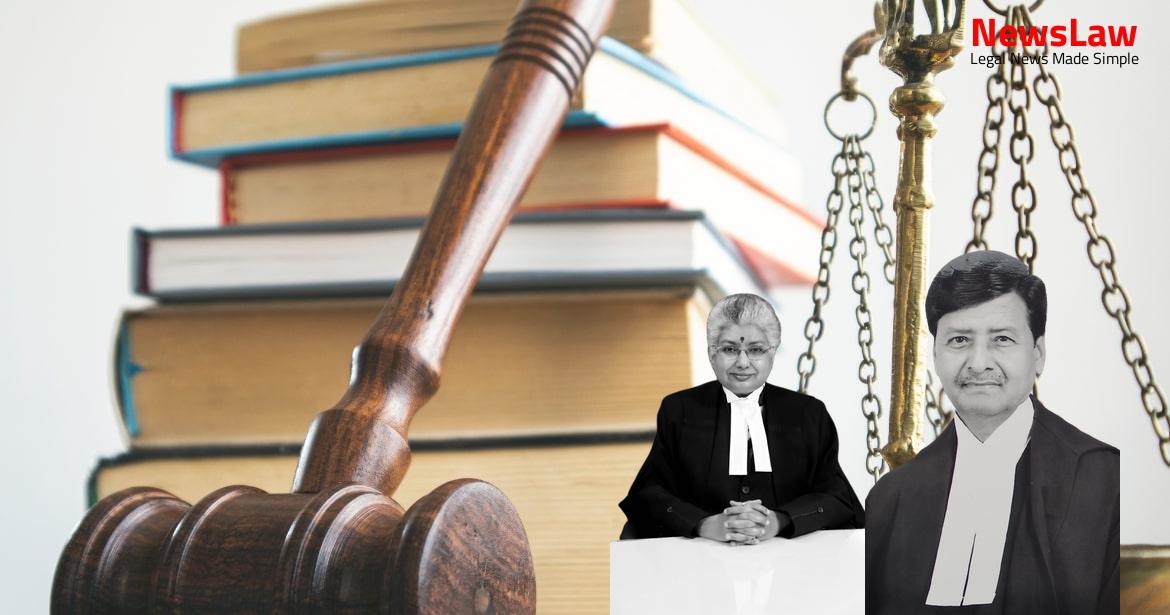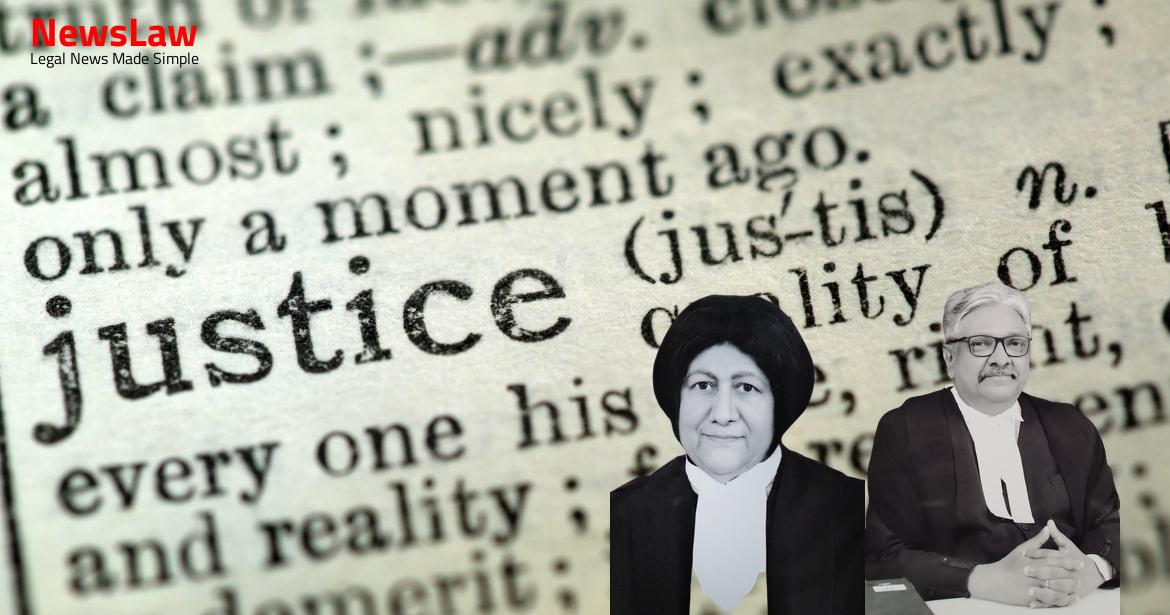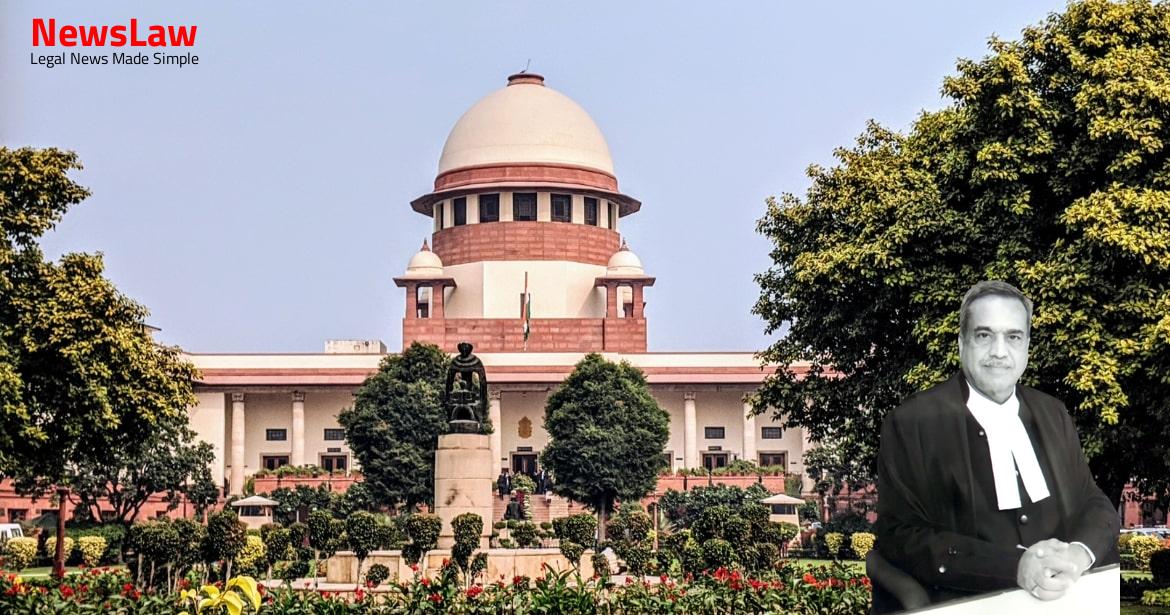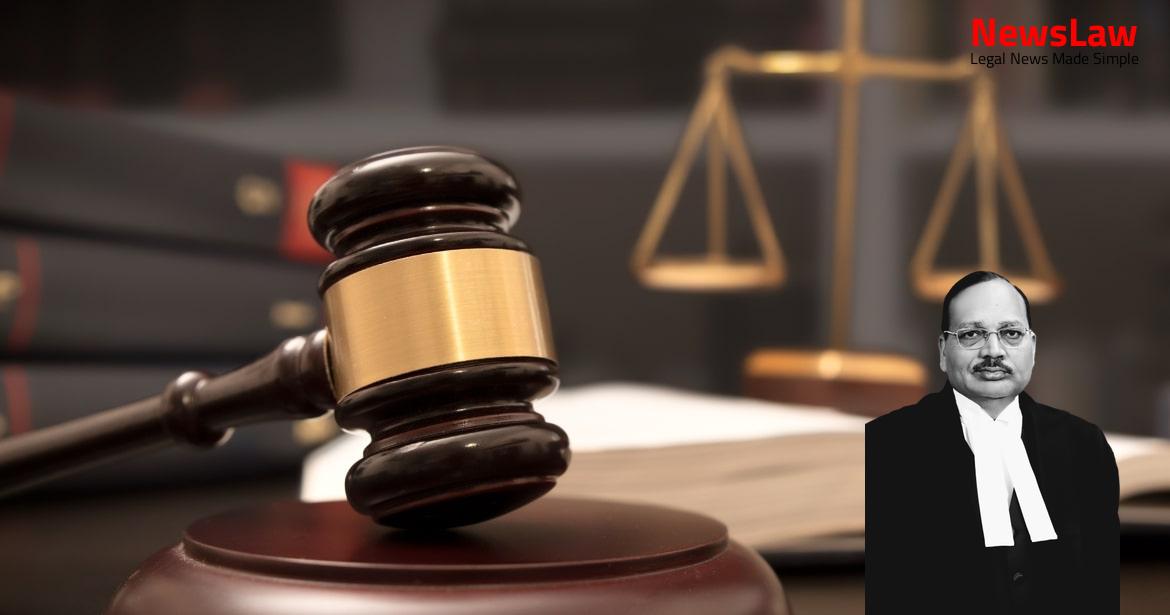Instant appeal has been filed under Section 116A of the Representation of People Act, 1951 assailing the judgment and order dated 16 December, 2019 passed by the High Court of Judicature at Allahabad, holding the election of the returned candidate (appellant) from 34, Suar Assembly Constituency of District Rampur, as void and consequently came to be set aside. The respondent filed the election petition before the High Court of Judicature at Allahabad on the solitary ground that the appellant was not qualified to contest the election for member of Legislative Assembly in view of Article 173(b) of the Constitution as he was less than 25 years of age when he filed his nomination papers and also on the day on which he contested the election from 34, Suar Assembly Constituency of District Rampur. The election petition, the respondent (election petitioner), inter alia, contended that objection as regards the age of the appellant was raised by him in the first instance before the Returning Officer, but the same was rejected without appreciating the bare documentary evidence on record and despite the date of birth of the appellant being 1 January, 1993, which was recorded throughout in his academic records, including his Secondary School Examination Certificate in 2007 from the Central Board of Secondary Education and Intermediate Examination in 2009 from St. Abdullah Azam Khan) appeared in Secondary School (Class – X) Examination in the year 2007. (iv) That the Central Board for Secondary Education has issued the Secondary School Examination (Class-X) result bearing the roll number, name, mother’s name and father’s name and date of birth of the appellant (Mohd. The election petitioner has only been able to get the certificate of Secondary School Examination (Class X) results of the appellant from the Central Board of Secondary Education. Abdullah Azam Khan) thereafter joined Galgotias University, Greater Noida for his Master’s Degree where he has filled-up form for admission with the same date of birth (01.01.1993). Paul’s School, Civil Lines, Rampur, where his date of birth was incorrectly and inadvertently registered as 1 January, 1993 and that was incorrectly shown throughout in his academic records in Secondary School Examination/Intermediate Examination and also in his higher studies including the date of birth reflecting in the birth certificate issued to him by Rampur Nagar Palika on 28 June, 2012, of 1 January, 1993 which was later cancelled and according to him, the birth certificate issued by Nagar Nigam, Lucknow, on 21 January, 2015 is based on the records maintained by Queen Mary’s Hospital, Lucknow, where he was born, his date of birth as per the hospital records is 30 September, 1990. Legislative Assembly from 34, Suar Assembly Constituency of District Rampur in the year 2017 and on that date the appellant attained the age of 25 years in terms of Article 173(b) of the Constitution for contesting the election of 34, Suar Assembly Constituency of District Rampur. Kapil Sibal, Senior Advocate appearing for the appellant, submits that there is a statutory presumption of validity of the nomination papers as reflected under para 6 of Chapter VI of the Handbook of Returning Officers, as held by a Three-Judge Bench of this Court in Rakesh Kumar v. 1 January, 1993 is incorrect and wrongly recorded, in fact, he was born on 30 September, 1990 and to support his date of birth, sufficient primary documentary evidence was placed on record which pertains to the authenticated record of Queen Mary’s Hospital, Lucknow, which is a Government hospital and followed with the birth certificate issued by the competent authority i.e. Therefore, the burden of proof lies on the election petitioner/respondent to rebut the presumption by adducing admissible and reliable evidence that meets the standard of preponderance of probabilities and the election petitioner/respondent has failed to produce any legally admissible evidence on record so as to discharge his burden of proof. (ii)
The respondent/election petitioner has failed to produce any direct and admissible evidence to prove that the appellant was born on 1 January, 1993 and was not born on 30 September, 1990 and in support, the only document produced by the respondent/election petitioner is the certificate of Class X Exam which is not a document for proof of age. Adib and thereafter she again availed third sanctioned maternity leave from 7 August, 1990 to 4 November, 1990 which is duly supported by service book, proved by DW.1 and that acknowledges that she gave birth to a male child on 30 September, 1990 in Queen Mary’s Hospital, Lucknow, in maternity department of King George Medical University, Lucknow, a Government Hospital and it is supported with discharge certificate dated 24 October, 1990 (Ex.R7), EOT register (Ex.R4) and MLR register (Ex.R5) duly supported by Dr.
(ix) The impugned judgment fails to consider the established evidence though it provides for proof of documents made in the regular course of business by a person other than the author and fails to consider Section 35 of the Evidence Act which states that documents prepared by an official (public or private) in performance of his duty recorded under law are relevant and admissible. (xi) The impugned judgment incorrectly record that Section 13 of the Births and Deaths Registration Act, 1969 and Rule 9 of the UP Registration of Birth and Death Rule, 2002 have not been followed while the birth certificate dated 21 April, 2015 was issued.
(xvi)
When confronting a witness as to any previous statement in a document it is mandatory that the said document be pointed out to the witness under Section 145 of the Indian Evidence Act to which no efforts were made by the respondent/election petitioner and at the best it is merely a piece of circumstantial evidence which has no legal backing and cannot establish birth of the appellant on 1 January, 1993. Aadil Singh Boparai, learned counsel for the respondent, on the other hand, while supporting the finding returned by the High Court in the judgment impugned, submits that he was successful in establishing before the High Court that the date of birth of the appellant is 1 January, 1993 by leading evidence and also as per the admissions made by the appellant/witnesses, admittedly the appellant was not qualified to contest the election for the Member of Legislative Assembly, being less than 25 years of age in view of Article 173(b) of the Constitution on the date when nomination papers were filled or the date of declaration of result and made the following submissions: (i) But, execution of the documents relied upon by the respondent has never been disputed and all are public documents in which consistently his date of birth recorded is 1 January, 1993 and thus, the burden was on the appellant to adduce evidence to rebut the presumption as aforesaid, that his date of birth is 30 September, 1990 and not 1 January, 1993.
Rakesh Kumar and taking assistance thereof submitted that the finding of fact returned by the High Court is based on due appreciation attached to its probative value and only thereafter it has been held that the appellant has failed to establish his date of birth as 30 September, 1990 and rightly declared the election of the appellant to be null and void and not eligible to contest the election in view of Article 173(b) of the Constitution.
Also Read: https://newslaw.in/supreme-court/c-a-no-008470-008470-2022/
The purpose of the Evidence Act, 1872 is to prove and disprove the existence of facts in issue and to find out the truth of the facts which are asserted by the parties as the decision of the case lies upon/depends upon the truthfulness of those facts. At the same time, when any fact is especially within the knowledge of a party, the burden of proving it lies upon that party. It is no doubt true that the burden of proof to show that a candidate who was disqualified as on the date of the nomination would be on the election petitioner. The initial burden to prove the allegations made in the election petition although was upon the election petitioner but for proving the facts which were within the special knowledge of the respondent, the burden was upon him in terms of Section 106 of the Evidence Act. The parties have led their documentary as well as oral evidence and have marked exhibits in reference to relevant documents placed by the election petitioner and the appellant in support of their respective claims to justify with regard to the date of birth of the appellant. In the election petition filed by the respondent/election petitioner, his solitary objection was that the appellant was not qualified to contest the election for Member of Legislative Assembly in view of Article 173(b) of the Constitution as he was less than 25 years of age when he filled his nomination papers and the date on which he contested the election and also on the date of declaration of the result of 34, Suar Assembly Constituency of District Rampur. P1 – paper
No A-51/1 – copy of birth certificate No 3857 of the appellant issued by Nagar Palika Parishad, Rampur, showing date of birth of the appellant as 01.01.1993 and date of Registration 28.06.2012.
P- 2 – paper No A62/1-3, copy of appellant’s pass port No K- 7951741, dated 13.07.2012 bearing date of birth as 01.01.1993 and entries of departure/arrival dated 30.04.2013, 05.05.2013, 09.06.2015 and 26.07.2016 and Visa dated 09.07.2014 all mentioning date of birth as 01.01.1993. The respondent/election petitioner appeared as a witness, PW.1 and while supporting the documentary evidence established that the date of birth of the appellant as per the school records and other documentary evidence placed on record is 1 January, 1993, at the same time made a specific averment in his examination-in-chief regarding the documents placed by the appellant/returned candidate on record, that these are all fake and forged documents which are manufactured to create false evidence regarding the age and date of birth of the appellant. The Court Witness PW.4 in his examination-in-chief deposed that all registers and other records related to birth certificate No.3857 dated 28 June, 2012 of the appellant have been destroyed because of the fire due to short circuit on 8 May, 2015 in the office of Nagar Palika, Rampur and is unable to place any record prior to 8 May, 2015, but verified the birth certificate dated 28 June, 2012 as the record is available in the computer system and a copy was placed on record and all these documents were generated either by the appellant himself or at his instance. The respondent has established on record that the date of birth of the appellant is 1 January, 1993 and this fact was not disputed by the appellant that the documents placed and relied upon by the respondent on record are public documents issued by the competent authorities. Even if this stand of the appellant is taken on the face value, the date of birth which is recorded in his Secondary School Examination, followed with his passport of the year 2006 and his certificate of birth issued by Nagar Palika, Rampur with registration No.RNPB2012-03857 dated 28 June, 2012 of which details have been furnished at least upto the year 2015 consistently in all unimpeachable documentary evidence not only in his academic records but in all other correspondence, he has throughout reflected his date of birth as 1 January, 1993, and since these are all his documents issued from the office of public authorities by the public officers based on the relevant data made available by the appellant himself/on filling application online or physically, the documents released to him in the name of the appellant disclose his date of birth as 1 January, 1993 and after evaluation of the documentary evidence supported by oral evidence on record, this Court certainly can record that it has a sufficient probative value, as required under Section 35 of the Evidence Act. In countering, the appellant has come out with a defence that his mother DW.5 who was a Lecturer in a Postgraduate College and retired in 2009, in her cross- examination deposed that her son (the appellant) after doing his M.Tech became active in politics in the year 2015 and at this time she proceeded for issuance of a birth certificate from Nagar Nigam, Lucknow and submitted application on 17 January, 2015 (Ex.A-96/1-5). It is sufficient to note that there was no documentary evidence obtained from Queen Mary’s Hospital, Lucknow, prior to the application dated 17 January, 2015, submitted by her (mother of appellant) for seeking a birth certificate from Nagar Nigam, Lucknow and it is not the case of the appellant that his date of birth recorded as 1 January, 1993 was due to some inadvertence, but at later stage, it came across that the correct date of birth of the appellant is 30 September, 1990 and this fact revealed in the year 2015, the family proceeded to obtain a certificate of birth from Nagar Nigam, Lucknow. In other words, the appellant was not holding any documentary evidence to support his claim prior to being placed on record in the course of election petition from Queen Mary’s Hospital, which was made to be a basis in the year 2015 to seek a duplicate birth certificate of 30 September, 1990.
Just to make a clarification that even in the application dated 17 January, 2015, submitted by DW.5 (appellant’s mother) there was no mention of a certificate earlier issued and the demand is to issue a duplicate certificate of the date of birth of the appellant who is born, as alleged, in the Queen Mary’s Hospital, Lucknow on 30 September, 1990. It was admitted by DW.5 in her cross-examination that in all his school records, Xth, XIIth, Undergraduate, Postgraduate degree, his date of birth recorded is 1 January, 1993 and that the question put to her in cross-examination about the date of birth of the appellant recorded in the academic record is 1 January, 1993, she made a very curious statement that it is the appellant who informed her that his date of birth is wrongly recorded in his school records, but neither the appellant nor mother-DW.5 ever proceeded in seeking correction in the date of birth certificate at any given point of time prior to the year 2015. From where this fact was gathered, it was not disclosed even in the cross-examination and a statement was made in his cross-examination that his date of birth either in his birth certificate dated 28 June, 2012 or in passport wherever recorded of 1 January, 1993 at a later stage was cancelled and has made a completely evasive answer in his cross-examination.
In a further question put to her in the cross-examination about the description in column no.16 of the register that whether it matches with the information mentioned in rest of the column, and also that whether the entry of period of pregnancy at page 174 of EOT register is different from entry of period of pregnancy in page 225 of MLR register, she admitted that yes, all these entries are different. Ans.:
No (d) Whether the nature of period of pregnancy at page no.174 of EOT register Annual No.5097 column no.10 is different from the entry of period of pregnancy in page no.225 of MLR register Annual No.1826, Column no.10? Ans.: Above both registers are not authenticated by the officer of Queen Mary’s hospital or King George University.
Few of the questions put to her in cross examination to produce the register of Registration of Birth and Death maintained by the Nagar Nigam, Lucknow be relevant to quote: (a) Whether is it necessary to maintain the birth register in the format given in Registration of Birth & Death Act, 1969? Apart from the said documents, we have looked into the extract copies of the birth register maintained by the Nagar Nigam, Lucknow (Ex.R-12). That apart from oral evidence to support the documents placed on record obtained from the Queen Mary’s hospital, we have looked into the relevant documents and from naked eye it appears that the EOT register where the name of DW.5, mother of the appellant has been shown, entry appears to be partially erased and rest of the page other than the entry relating to DW.5, no change is being reflected from the entire document. State of Haryana came to the conclusion that while considering such an issue and documents admissible under Section 35 of the Evidence Act, has to examine the probative value of the contents of the document.
In the instant case, the academic record of the appellant consistently indicates the recorded date of birth of the appellant is 1 January, 1993 and to be more specific before 17 January, 2015, all documents which were released from various public offices under the signatures of public authorities, the date of birth of the appellant has throughout been shown as 1 January, 1993 and as stated by DW.5 (mother of the appellant) and so also the appellant herein (DW.10) after doing his post-graduation he wanted to come in active politics, application was submitted on 17 January, 2015 for the first time to the office of the Nagar Nigam, Lucknow for obtaining the birth certificate of the appellant based on Queen Mary’s Hospital, Lucknow and the fact is that no documentary evidence was supported along with the application, except the affidavit sworn by DW.5 to the application dated 17 January, 2015 and it is not possible for a common man to get the birth certificate in the existing facts and circumstances, but so far as the appellant is concerned, birth certificate was issued with no loss of time on 21 January, 2015 which was otherwise not possible.
Two birth certificates are issued by two different authorities (Nagar Palika, Rampur/Nagar Nigam, Lucknow) at different point of time, the presumption is that there must be some documentary evidence available in the custody of municipality indicating two different dates of birth of the same person at the same time i.e. So far as the judgment relied upon by the appellant in Joshna Gouda (supra) was a case where the reliance was placed on the school admission register and admission form, including the transfer certificate, but no supporting evidence/proof was available on record.
Rakesh Kumar [(2003) 8 SCC 673] this Court as regards determination of age of a candidate in terms of Section 36(2) of the Representation of the People Act, 1951 observed: (SCC pp. Furthermore, an admission on the part of a party to the lis shall be binding on him and in any event a presumption must be made that the same is taken to be established.” This Court therein followed, inter alia, Birad Mal Singhvi [1988 Supp SCC 604] and several other decisions.” In the instant case, the documents issued by Nagar Palika, Rampur in the year 2012, clearly indicate the recorded date of birth as 1 January, 1993 and which is duly supported by his academic record from Class X onwards at all stages which had been generated only under the appellant’s own signatures or under the authority of the appellant and this in no manner could be disputed. Although the defence of the appellant is that since his name was already registered in the records of Nagar Nigam, Lucknow, Section 13(3) of the Registration of Birth and Death Act, 1969 may not apply, but this submission appears to be misplaced for the reason that on the basis of the birth record maintained by the Nagar Palika, Rampur, the birth certificate was issued to him under the orders of the competent authority on 28 June, 2012, and there cannot be two separate records of birth available in two different municipalities (Rampur/Lucknow) of the same person and in the given situation, no credibility can be attached on the records maintained by the Nagar Nigam, Lucknow, and in our considered view, the procedure as prescribed under Section 13(3) of the Act, 1969, in the ordinary course of business, was supposed to be adopted by the authorities while a fresh certificate of date of birth was issued to him on 21 January, 2015, which indeed has not been followed by the competent authority by Nagar Nigam, Lucknow.
In support thereof, the documentary evidence which the appellant has placed on record obtained from the Queen Mary’s Hospital, Lucknow, as a foundation on which the birth certificate has been issued as alleged from the Nagar Nigam, Lucknow, in our considered view, no probative value could have been attached to it. (AJAY RASTOGI)
Case Title: MOHD. ABDULLAH AZAM KHAN Vs. NAWAB KAZIM ALI KHAN (2022 INSC 1178)
Case Number: C.A. No.-000104 / 2020



